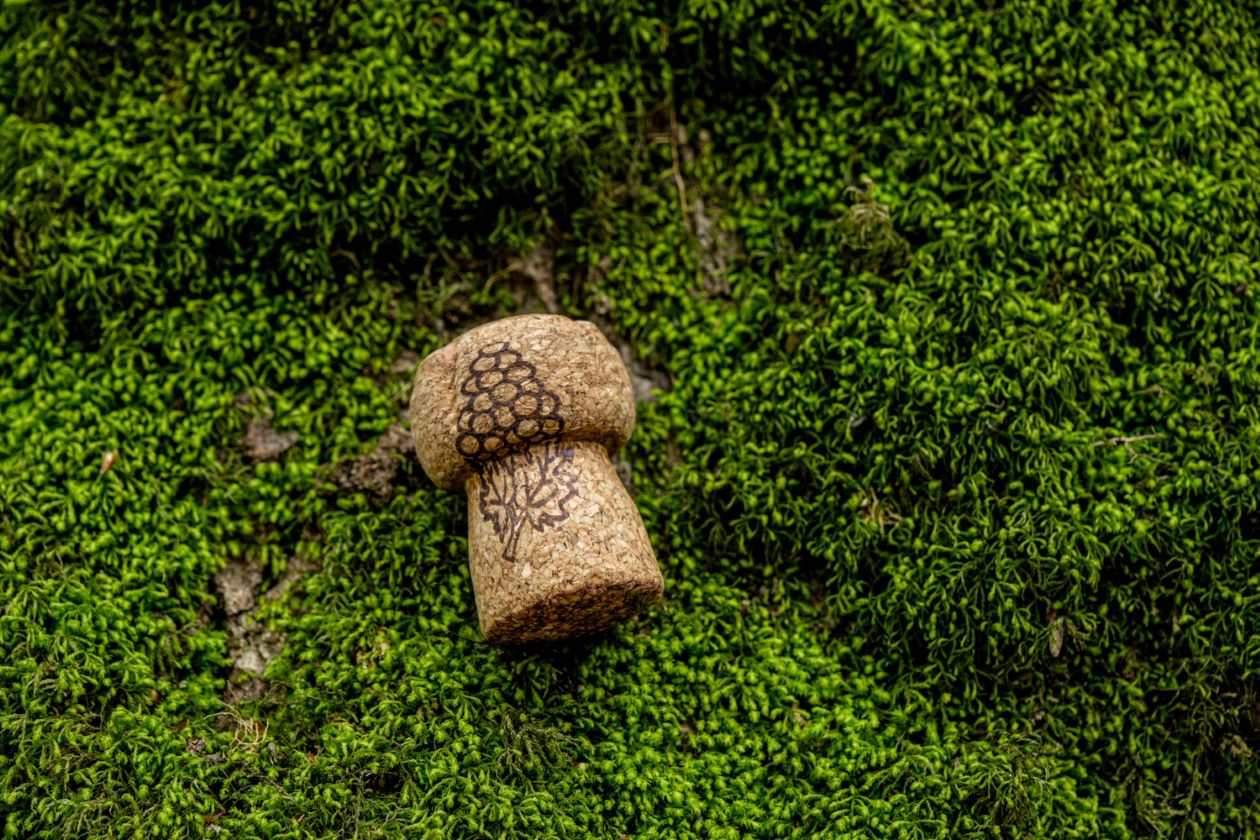Does your lawn have strange, squishy, green spots? It could be moss. These old-school plants love cool, moist shadows. How to get rid of moss in your lawn naturally? That can easily take over and steal nutrients from your grass. Moss won’t hurt your lawn, but it can make it look patchy.
So how do you kill moss without killing plants? This guide can help. Learn how to get rid of moss and grow healthy grass. Some methods are nature-based, while others use chemicals.
Maybe you’re wondering when is the best time to apply moss killer to your lawn. Spring and summer are key moss-control times. They’re when moss grows a lot. Do you want to kill moss permanently and create a beautiful green lawn?
4 Easy Steps to Get Rid of Moss in Your Lawn
Rake Your Lawn
A moss doesn’t root deep. So a vigorous raking can detach the moss and expose the soil beneath. That lets sunshine and fresh air touch the grassroots, supporting their growth. Also, raking removes dead grass blades and debris that can cause shadowy, damp areas.
How to rake effectively?
It would help if you timed it right. Generally, the best time to rake for moss removal is after a light rain or watering. That helps to avoid damaging the grass. Take care when picking up your rake.
A spring tine rake or dethatching rake makes moss removal easier. A springtime makes basic moss cleanup a breeze.
However, dethatching rakes typically have robust tines for handling more extensive moss patches.
Ranking Technique:
Rake the moss-like you’re brushing your hair. You can apply a comfortable level of force in a smooth, back-and-forth movement. That avoids damaging the grass with harsh scrapes.
Make sure to rake in several directions to get the most out of every way. Keep your pressure in check so you don’t hurt the grass underneath while removing the moss.
Once the moss has been raked up, collect it and dispose of it in a compost bin (if it isn’t contaminated with chemicals or debris).
Deal with Lawn Moss with Organic Solutions
Moss may grow on your lawn, but harsh chemicals aren’t the only answer.
Here, we explore two natural methods to eliminate moss and promote a healthy green haven:
- Baking soda:
This readily available kitchen staple can be surprisingly effective against moss. Baking soda disrupts soil balance and creates an environment that is less hospitable to moss growth. Here’s how to use it:
Mix it up. Dissolve 2-3 tablespoons of baking soda in a gallon of warm water. For smaller areas, adjust the proportions accordingly.
Use a spray bottle: Apply the mixture directly to the moss using a spray bottle. Ensure that the moss is thoroughly soaked.
Take Your Time: Baking soda might not work immediately. It requires patience.
Over a few days, inspect the moss. It will change like turning brown or drying up if it is dying.
After a few days, you may need to apply the solution again if the moss is too much.
Baking soda can raise the soil’s pH. You should consider the type of grass you have before using this method to control moss. If your grass prefers acidic soil, monitor the pH after using baking soda and adjust if necessary.
- Dish soap solution:
Typical dish soap can also be used as a natural moss killer. The soap disrupts the moss’ cell walls, killing it.
Mix mild dish soap (2-4 ounces) with water (2 gallons).
Soak the mossy areas in your mix, making sure they’re well coated. Please don’t Overdo it. Dish soap helps, but too much can damage your grass.
Don’t exceed the suggested mix or drench your turf too heavily. Watch and Do it Again. Watch over the moss. Do the same process again if needed, but keep applying it safely.
Spray With Chemical Moss Killer
Chemical moss killers are faster and more precise. However, it’s important to understand how they operate and potential drawbacks.
Why spray?
You can safely treat your lawn with moss-specific chemicals. Just a few days after using it, you might notice a clear difference, perfect for major moss issues. Easy to find. There are many gardening and home improvement stores where you can find moss-fighting chemicals.
How to spray effectively?
Use a moss killer earmarked for lawns. A solution with ferrous ammonium sulfate or iron sulfate is good for lawns, but not for moss.
Understand the Label Instructions. Each product differs. It’s imperative to check the maker’s advice on the mix, how much to use, and safety measures. If applied too much, it can cause damage to your lawn or damage to the ecosystem.
Get a sprayer ready. It is best to use a clean pump sprayer for herbicides. Please don’t mix it up with insecticide sprayers, or residue can hurt your grass.
Timing is Everything: Apply the moss killer on your lawn on a calm, rain-free day. Make sure the weather is mild and there is little wind so that the product will not drift.
Self-Protection: Safety first! Use gloves, glasses, and a long-sleeved garment when dealing with moss killer.
Spot-Check: If you spray your entire yard, concentrate on mossy areas to save the environment and protect your grass.
Thorough Application: Direct the spray to the moss, keeping it even. Stay clear of healthy plants or flowers.
If you water after applying the product, moss can be killed, but experts say you should not water right away.
Remove Thatch and Aerate the Lawn
Moss likes its home comfy – a thick, packed soil with a thick blanket of dead grass (thatch) on top. This keeps air and water away from your real lawn friends, the grassroots. But we can fight back!
Thatching:
- Rake it out: You can use a dethatching rake (springy metal tines) for small lawns or mild thatch problems.
- Power Up: For bigger jobs, rent a power dethatcher (spinning tines). But don’t use too much power; it can hurt the grass!
Choose spring or fall to dethatch when the lawn is sturdy. First, cut it shorter than average; this reveals more thatch.
If there are any empty patches, fill them with grass seeds. Gather any leftover thatch.
Aerating:
Aeration is smart. It creates holes in the ground, leaving tiny bits of soil. These bits nourish the grass. While it’s quicker for compacted soil, it’s not as efficient. It is recommended to perform dethatching in the spring or autumn. Hydrate the lawn a day or two prior. A slight sprinkle can help everything settle post-aeration.
Fight Moss, Love Your Lawn!
Take out thatch, let the air in, and let it get wet often. This way, your lawn stays vibrant and strong. It’s easy to remove moss and make your yard shine.
What is the best time to apply moss killer to lawns?
The best time to fight back is when the moss is actively growing and your grass can bounce back. This typically happens in late spring/early summer or late summer/early fall.
Here’s why:
- Moss on the Move: During these times, moss is busy feeding, making it more vulnerable to moss-killer attacks.
- Grass Gets a Boost: Warmer weather and rain (fingers crossed!) help your lawn recover from the treatment.
Always remember to check the specific moss killer’s instructions, too, as some might have different timing preferences. It is best to apply moss-killer in summer rather than winter (moss napping) since scorching summers can be stressful on your lawn.
What causes moss in lawns?
Here’s a breakdown of the culprits that favor moss and what you can do about them:
Soil Issues:
- Acidic Soil: Moss prefers acidic soil. A simple soil test can determine your lawn’s pH. You can apply lime can raise the pH and discourage moss growth.
- Infertile soil: Lack of nutrients hinders grass growth. You can allow moss to establish itself. A balanced lawn fertilizer will help your grass compete more effectively.
Shade and moisture:
- Excessive shade: Dark areas tend to promote moss growth. It is recommended that you plant shade-tolerant grass varieties or trim back tree branches.
- Poor Drainage: Moist, poorly drained soil creates mosses. After aeration, water flows more readily through the soil. Some severe cases might need grading or drainage ditches.
- Too Much or Too Little Water: You’ve got to figure out where to water. When you overwater, moss grows, while when you are underwater, grass grows.
Lawn care practices: How to prevent moss in your lawn from coming back?
- Grass Cut Too Short: Short lawns allow moss to take over and weaken them. Aim for a mowing height of 2-3 inches.
- Lack of Fertilizer: Proper fertilization is essential for a healthy lawn that resists moss growth.
- Heavy Foot Traffic: Areas with constant wear and tear are susceptible to moss growth. If heavily trafficked areas lack a designated pathway, you may consider spreading topsoil and grass seed.
Your lawn can be protected from moss growth by following the following factors.
Read Also: Sustainable Gardening: Solutions For Beautiful & Functional Home & Garden Lighting
FAQ
How to Kill Moss Without Killing Grass?
Several methods target moss specifically while leaving your grass unharmed:
- Organic Solutions: Baking soda or dish soap solutions disrupt moss cell walls, drying it out and die. However, these methods might take longer and require repeated applications than chemical solutions.
- Chemical Moss Killers: Look for products containing iron sulfate or ferrous ammonium sulfate. That kills moss without harming most grass types. Always follow the label instructions for safe and practical application.
- Raking: Physically removing the moss layer with a rake is an excellent first step, especially for smaller patches. These allow sunlight and air to reach the grassroots.
How does Dawn Dish Soap kill moss?
Yes, diluted Dawn dish soap can kill moss, but it’s not the best solution. If not used carefully, it can harm surrounding plants. You can consider natural alternatives like baking soda or targeted moss killers for better control.
What’s the best way to get rid of moss?
Multi-pronged approaches are most effective:
- Remove Existing Moss: Rake away loose moss and consider organic solutions or a moss killer for stubborn patches.
- Address Underlying Causes: Improve drainage, adjust watering habits, increase sunlight exposure, and fertilize your lawn.
- Prevent Moss Return: Maintain proper mowing height, aerate the lawn regularly, and consider using slow-release iron products to suppress future moss growth.
Natural Ways to Remove Moss?
Here are some eco-friendly options:
- Baking Soda: Dissolve baking soda in water and spray on moss patches. It disrupts the moss’s balance, causing it to dry out.
- Dish Soap Solution: Dilute dish soap with water and spray on the moss. It disrupts cell walls, but nearby plants may suffer.
- Cornmeal: Spread cornmeal around mossy areas. As moss grows, cornmeal dehydrates it.
Permanently Killing Moss?
Moss on concrete gives it an attractive look and isn’t damaging. You can clean it off with a stiff brush or diluted vinegar (be sure to wear gloves and goggles!). You can also use a low-setting pressure washer to clean your concrete without leaving marks.
Will Lime Kill Moss?
Although lime does not directly kill moss, it can reduce the moss’ growth by raising the soil’s pH level. A soil test will determine if lime is necessary for your lawn.
Moss in a Shady Lawn?
There is no guarantee that all shades can be eliminated. You can still create a healthy grass environment:
- Thin Out Overhanging Branches: Allow more filtered sunlight to reach the lawn.
- Plant Shade-Tolerant Grass: Choose grass varieties that thrive in less sunlight, like fescues.
- Improve Drainage: Ensure proper drainage to prevent boggy conditions that favor moss.
Moss on concrete?
Moss on concrete gives it an unusual look and isn’t damaging. If you want to clean it off, you can use a stiff brush or diluted vinegar (make sure to wear gloves and goggles!).
A low-setting pressure washer can also do the job without marking your concrete.
Moss-Killing Without Harming Plants?
Use moss killers around desirable plants with caution. Here are some tips.
Spot Treatment: Apply moss killers only to moss patches, avoiding contact with the surrounding plants.
Natural Methods: Option for organic solutions like baking soda or cornmeal, which harm nearby plants less.
Physical Removal: Manually remove moss with a rake or gloved handpicking for small areas near plants.




















Average Rating